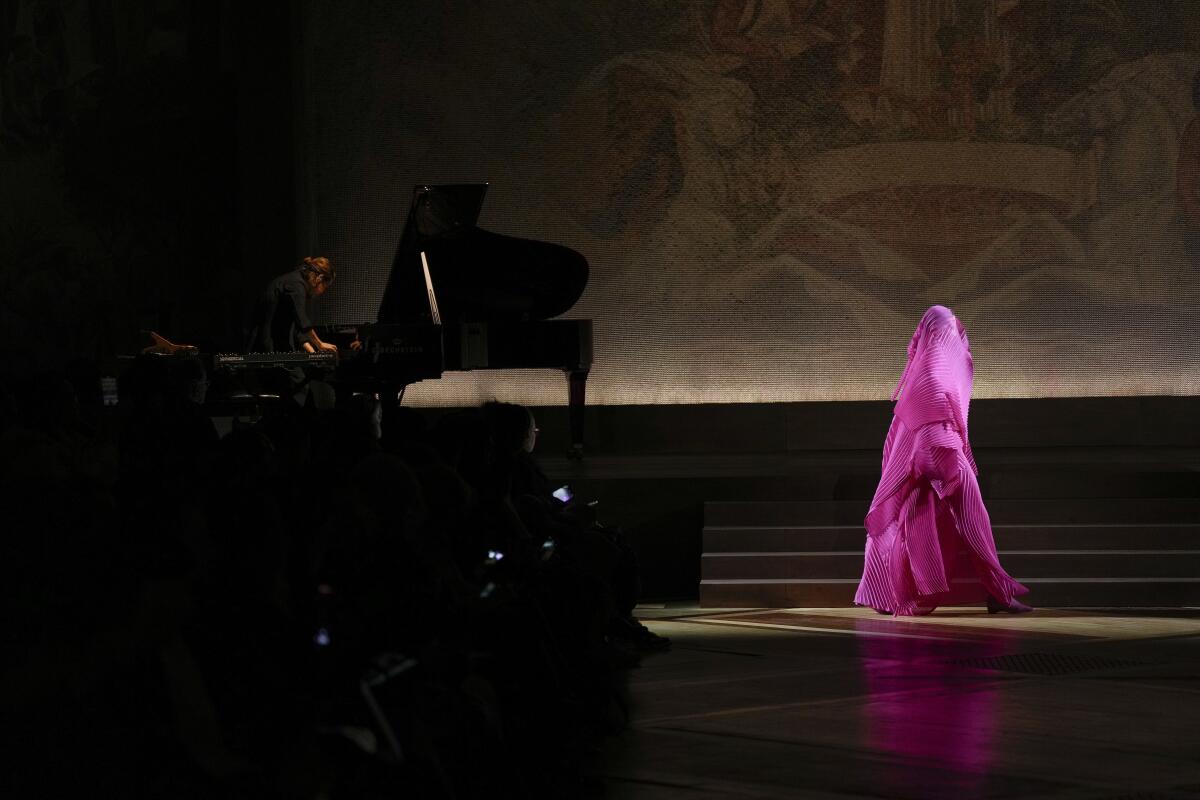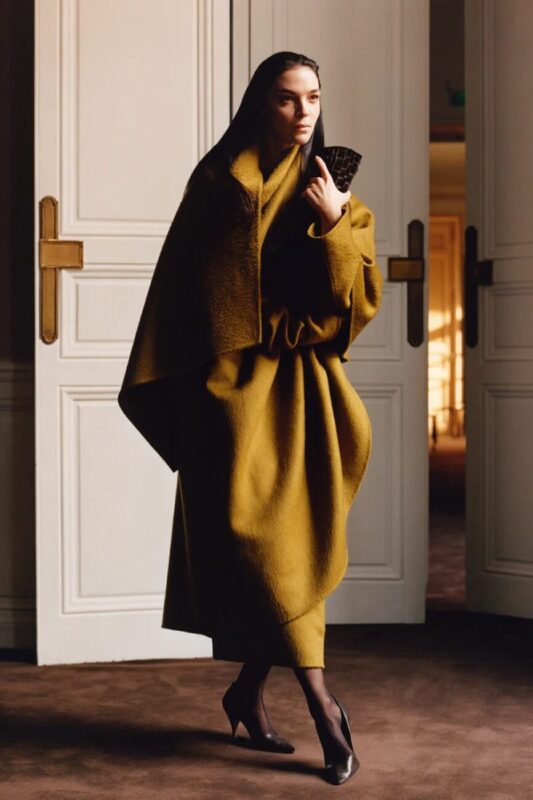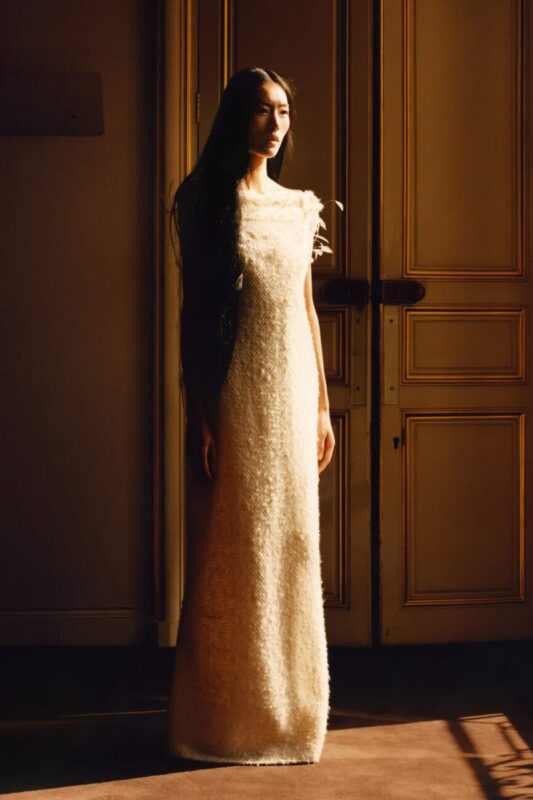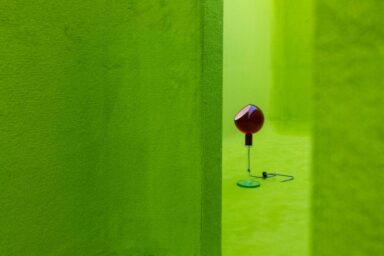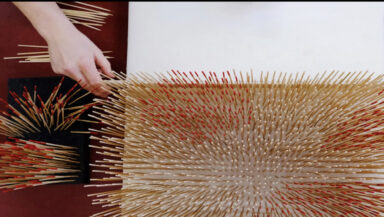It will be repetitive, but body and fashion go hand in hand. They walk together, they influence each other, they court each other, sometimes they hate each other, sometimes they make love. Paris has been a good gym for the female body. Because we always wonder how much fashion respects the body. Working on the body is always complicated, it is a bungee jumping without protections. Nevertheless, attempts are necessary, sometimes they hurt, but are necessary. Dealing with the body means dealing with uncomfortable issues that society tends to hide out of fear. The body as a cage was for example the attempt made by Maria Grazia Chiuri for Dior, while Anthony Vaccarello from Saint Laurent undressed the models to their soul. And for the first time in such an obvious way, the female pleasure has arrived on the catwalk. The models of Courrèges paraded with a hand placed in a pocket on the clitoris. A small gesture that cancels the shame. The one imposed by others. Embrace the pleasure
Words DOMENICO CASORIA
Dior
Sometimes fashion is freedom. Maria Grazia Chiuri knows this well, who for autumn winter compared clothes and cages – to emphasize how the first liberino and the second cages. The new collection has been shown in Paris among the works of the Indian artist Shakuntala Kulkarni, who through her armor reflects on the female body and its relationship with spaces. But that of Dior is a collection that talks mainly about women and history. Maria Grazia Chiuri was in fact inspired by Gabriella Crespi, famous Italian architect and interior designer. Not only that, Crespi was the muse of the artistic director Marc Bohan, who in the 60s launched Miss Dior, the first ready-to-wear line of the brand. Maria Grazia Chiuri was therefore inspired by them, bringing on the catwalk clothes and skirts from the line to A on which stands the inscription “Miss Dior” as graffiti, suits but also dresses embellished with fringes and gold threads. The new project of Chiuri enters fully into the work of female liberation that the designer carries on since she is creative director. The interesting point, however, remains the comparison with the cages of Kulkarni. The new project of Chiuri enters fully into the work of female liberation that the designer carries on since she is creative director. The interesting point, however, remains the comparison with the cages of kulkami, because for too long fashion has been a corporate cage, tightening the body in impositions. A tortured and vilified body, which is reborning.
We have get broken down to get raised back up.
Schiaparelli
SchiaparellI by Daniel Roseberry collection is a milestone that underlines one thing: there is a ready-to-wear way to read the brand. Clearly it takes time, but we’re not far. Without the (necessary) roar of haute couture, a conventional collection for everyone was presented on the catwalk.
“Esprit de Schiap” it’s about turn-up suits, cargo pants, fencing corsets and chic cocktail dresses. A Schiaparelli declined in denim version, in jackets and puffed skirts, and in oversize version, in coats. The most surprising chapter was, however, the one on costume jewelry, which recalled the surrealist approach of the founder.
The journey is long but we are well on the way.
Chloé
Chemena Kamali’s debut for Chloé was the most anticipated of fashion week. A highly structured brand with well-defined codes and ideas. Confronting a brand so recognizable and defined in Parisian memory is difficult. Kamali tried, drawing on hippie chic, offering boho chiffon blouses, very chic shiny leather capes, impalpable lingerie and high boots. It’s a collection that speaks of sophistication and poise and is sure to appeal to wealthy Parisians from Montmartre or the sixth arrondissement. There is only one problem, this aesthetic excludes all women who hate perfection, who struggle without going to the hairdresser first. It is also to these women that Kamali must look.
Rick Owens
Survivors from a distant planet, the heroines imagined by Rick Owens for next winter migrate as a tribe. There was something biblical about them, stooping under heavy throws, wrapped in ultra-long hooded capes, their torso swathed in voluminous scarves. An impression heightened by the fallen-angel jacket in pink leather, two wings spreading out at the back. Stepping out to the poignant notes of Maurice Ravel’s Pavane pour une infante défunte, in a synthesiser version, the models seemed to have travelled from the distant past or a far-flung future, across deserts and barren landscapes. Owens offered these nomads a moment of respite, a soothing pause in the “savage times we are living in,” as the US designer said in his collection notes. He welcomed them in his home, in the familiar surroundings of his Parisian headquarters-atelier in place du Palais-Bourbon, as he did in January for the menswear week. The collection exuded an urgent need for protection via its snug, enveloping outfits in recycled wool, alpaca and cashmere, and its silhouettes encased head to toe by hoods, gloves and imposing ogive-shaped rubber boots, which in some cases folded like an accordion, in others climbed way up the thighs. Some knitted tops with matching hood left the back entirely bare. Knitwear was ubiquitous, with turtleneck bodysuits and long siren dresses with over-long sleeves and trains trailing on the floor. Space-traveller jumpsuits came in soft wool and in delicate hues, like pale aqua green. The ponchos, tunics, hooded dresses and coats were made with wool knitted and treated in a variety of ways, carded, felted and washed. Huge coils of wool and soft leather, woven and rolled around the torso and shoulders, became bowl-shaped tops. Rick Owens also presented intriguing cage dresses made with thick sequin-scattered strips coiling around the body like snakes.
Loewe
Jonathan Anderson deals with the theme of fashion as a representation of the welfare state. It takes the marks and tropes associated with the British upper class – the morning suits of Eaton students, such as the carvings of Chippendale chairs and floral tapestries, but also portraits of framed house animals – and decontextualizes them in a sharp and rough fantasy made of enveloping volumes, sharp tailoring and humour at times grotesque. To follow Anderson’s thought is to face a journey in the open sea inside a nut shell: you are overwhelmed by the waves of an imagination that avoids in every way the literality, so disheartening elsewhere. What Anderson imagines for Loewe is a cross of high craftsmanship, pure abstraction, ability to create desire. This trial, housed in a labyrinth as green as a patrician garden, the walls of the small, magnificent landscapes painted by Albert York, American painter dear to happy few as Jackie Kennedy, is particularly successful, Although it responds to a certain Loewe way of doing things. It is characterized by a sagacious innuendo on the masculine to the feminine, an abandonment to preciousness – caviar embroidery and prints – liberating and smug and a attention to accessories – embroidered biker boots, soft bags – which is evident without being nullifying for the rest.
Saint Laurent
Anthony Vaccarello’s latest collection for Saint Laurent took place in two vast circular rooms, curtained around their exteriors in emerald green damask, recalling the draped windows of the house’s historic haute couture salons at 5 Avenue Marceau. The mood, the designer noted, was one of intimacy and that of a ‘boudoir’, providing an apt setting for a seductive, sensually charged show which riffed on the idea of transparency. ‘Anthony Vaccarello reminds us of what once was at the centre of fashion by rendering it invisible: clothes,’ said the house in collection notes, ‘minimising the distance between garment and skin so the two effectively meld and fabric evaporates like mist.’
As such, the nexus of the A/W 2024 collection was a series of sinuous, gauzy gowns recalling undergarments and hosiery, wrapped around the body in various ways. One inspiration, said the designer, was Marilyn Monroe’s notorious ‘naked’ dress, worn by the actress for her last appearance in public in 1962. Indeed, there was a nostalgic glamour to the flourishes of faux fur – like a series of jackets which were not worn but grasped in the hand – or the palette, which Vaccarello said recalled the powdery hues of make-up. And, if full-scale exposure is not your track, a series of perfectly crafted caban-style overcoats or fluid, wide-shouldered tailoring offered an elegant way to cover up – and perhaps a hint of where Vaccarello might be heading next.
Issey Miyake
Satoshi Kondo for Issey Miyake, relies on the act of dressing the human body as a preparatory act to creativity. The autumn winter fashion show combines the heritage of the maison with an innovative and avant-garde approach. Clothes speak of present, past and future, but do not lose functionality and form. A space-time journey that investigates the roots of fashion and its changes.
Courrèges
Finally someone addressed the topic of female masturbation. Is there anything more revolutionary than talking about female desire through fashion? No, and in a world that always tends to blame, it’s even better. The Courrèges show was literally a hymn to female pleasure. Creative director Nicolas di Felice brings a sensual and not explicit collection to the catwalk. It all starts with a pocket on the clitoris in which the models put their hand. A human touch that opens to infinite senses. Courrèges’ new work speaks of not guilty, of briefs and petticoats, of sexual pleasure. That finally invests fashion.
Acne Studios
A set of enormous rubber armchairs and stools, crafted by Estonian artist Villu Jaanisoo from recycled car tyres, provided the backdrop for Acne Studios’ latest womenswear collection. Their strange, moulded shapes reflected the collection’s mood, an exploration of toughness and human form. The latter two fabrics have long been at the heart of Acne Studios; here, they were reimagined in sculpted, near-industrial silhouettes.
But there was a surprising softness to the collection and moments of elegance too. This collection is about the juxtaposition of an elevated femininity and a biker attitude,’ Johansson told Wallpaper*. ‘I wanted to look deeper into the archetypal codes of women’s fashion and confront them with the codes of Acne Studios.’
Junya Watanabe
Just two words for Junya Watanabe: visionary and eclectic.
Watanabe looks for armor for the body, and finds it. In his vision, probably, the body must be protected and not shown. The iron elements shaped and positioned to complete the clothes, are a security armor. Here we talk about shields, almost in the medieval manner, united with issues that surround the body. There is almost a three-dimensional research in the works of the Japanese designer. There is also a kind of constriction. As in the leather belts that wrap around the body.
Sometimes hiding is better.
Noir Kei Ninomiya
There was a feeling of levity and play to Kei Ninomiya’s A/W 2024 collection, which the Japanese designer titled ‘Iridescent’. Set to a cranking soundtrack with a fairground-style announcer calling out the various looks by number, out bounced his models in typically intriguing creations which this season were defined by a liberated use of colour. Across the designer’s sculptural silhouettes – largely A-line in construction – were rainbows of crystalline feathers, pinwheel flowers, and clear geometric motifs which recalled 1970s crochet.
The Row
We had to wait a week to see the collection, because the two sisters decided to ban mobile phones during the parade, and the question is only one: was it worth it? If we were bad people we would think that banning cell phones was a marketing move to increase hype. But we have a heart of cream and we are sure that the two sisters did it for the sake of fashion. The collection, however, is pretty. It walks on the arrogant Upper East Side rich women/ice princess thread, but it has a bit of genius in the cuts of her clothes and especially in the jackets that scream “elitism”. Quiet luxury like rain.
